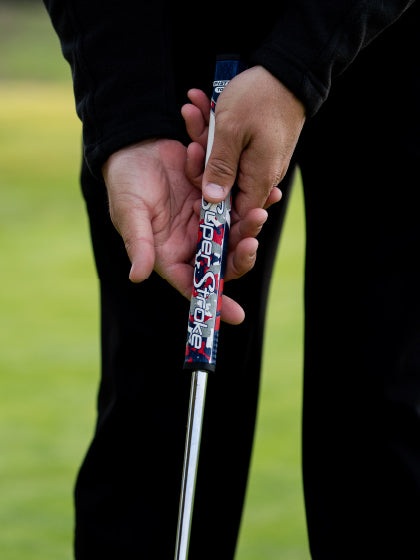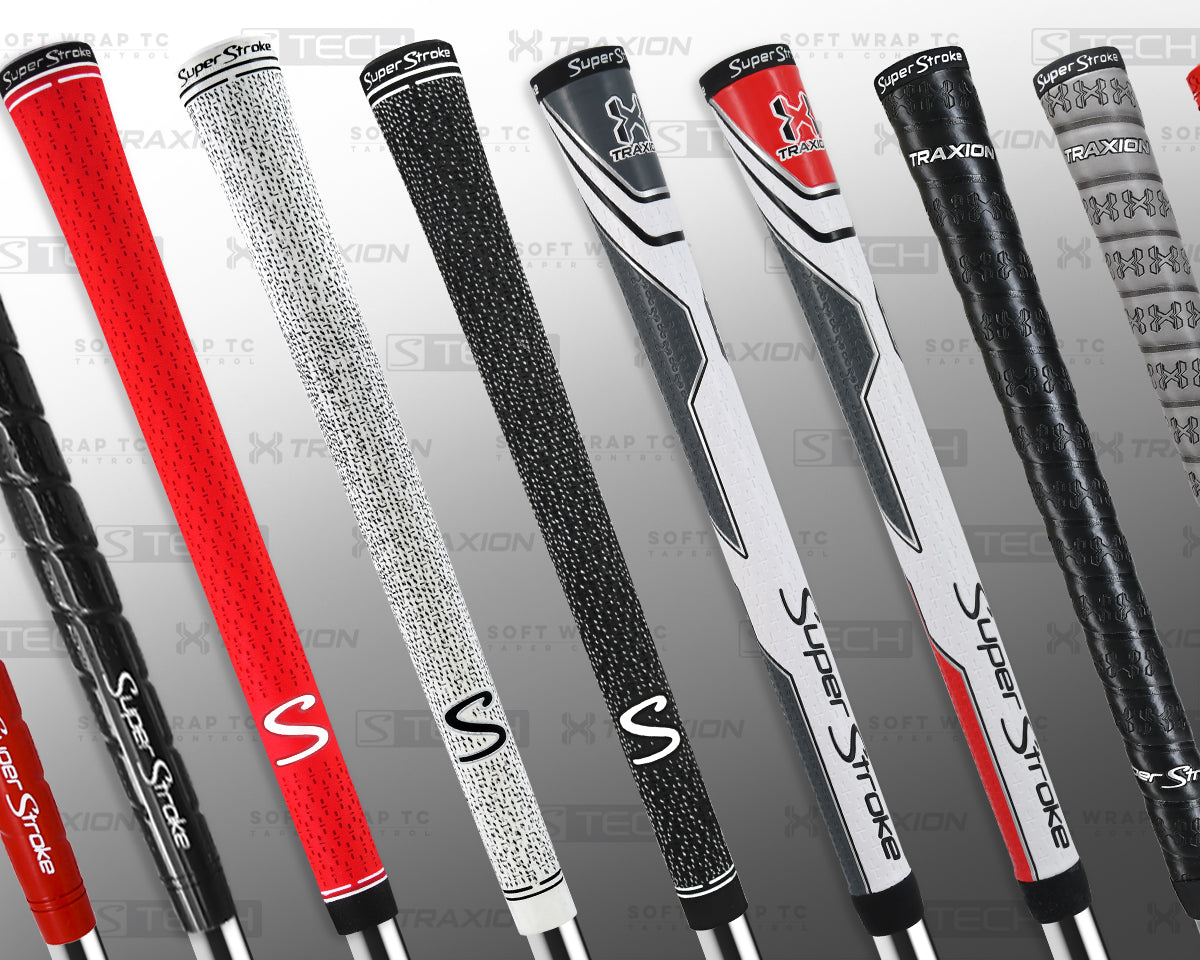It’s true that shaft weight, MOI, sliding weights, etc., are important considerations as you fit golf clubs to your game, but they’re also important to keep in mind as you consider golf club grips. Whether you like it or not, the right golf grip can make or break your game, so it’s essential to thoroughly consider the one you choose.
The golf grip is your contact point with the club, where the energy you create is transferred to the shaft, the clubface and, finally, to the ball. If that connection to the club isn’t right, all the latest club technology won’t matter.
You’ll know you have the right golf grip on when, at address, it feels so natural, comfortable and confidence-inducing that you don’t even think about it. The ideal way to get there is to try a bunch of golf club grips and hit a variety of shots — all-out drives, muscling out of thick rough, half-swings, touch shots around the green — judging the golf grip’s comfort, feedback and stability.
For most of us, that kind of experimentation isn’t realistic. The more pragmatic approach is to narrow the wide variety of grips for golf clubs down to a few contenders. In addition to using SuperStroke’s grip selector tool, here are some guidelines to help get the right golf club grip in your hands.
Start with golf grip size
The grip size debate rages on when choosing grips for golf clubs. Old school players contend that smaller golf grips encourage wrist action, resulting in a hook. Larger golf grips, they say, promote the opposite; quieter hands produce more of a fade ball flight. There’s also a camp claiming fatter golf grips are better for older players who have arthritis.
You always have the option of a happy medium in midsize golf grips if you want something a little bigger but arent’s ready to commit to fatter grips.
If you’re curious about using a larger size grip, a quick way to grasp the effect midsize golf grips or oversized golf grips can have is to flip the club around and take your grip on the shaft near the clubhead. Trying to get a confident grip on this slender part of the shaft takes more effort and tighter pressure. It may even create some discomfort.
Flip the golf club back around and take your normal grip. Note how much easier it is to take a lighter grip and feel in control of the club. If you repeated this process through the range of SuperStroke club grip sizes — undersize, standard, midsize and oversize — you would also feel that the thicker the diameter of the grip, the easier it is to have “quiet” wrists. The less your wrists are prone to roll, the more consistent and straight your shots will be.
Settling what diameter club grip is right for you comes down to trial. Golfers who have never experimented with different sized grips for golf clubs are amazed at how much it affects their swing. Often, it doesn’t even require a swing; the unfamiliarity is enough to swear a golfer off of a larger (or smaller) grip size.
One other thing to keep in mind if you experiment with sizes – swing weight. More weight in the handle may alter your feel for the club head.
Once you make a decision on size, look to SuperStroke’s line of club grips and putter grips where you’ll find a full range of sizes.

To taper or not to taper golf club grips
Should grips for golf clubs be tapered at all? Fans of tapered club grips say that tapering keeps the grip from slipping out of your hands. Others argue it’s merely tradition and that there is no performance rationale for having tapered golf club grips.
Advocates of no or minimal taper believe that a thicker, lower hand area encourages lighter grip pressure that reduces the tension that is the enemy of a consistent golf swing. Those considering a no taper or minimal taper should check out the SuperStroke Traxion Tour with Taper Control Technology, a TOUR-inspired minimal taper design.
Rubber vs polyurethane grips (AKA performance v. comfort)
For the first couple of centuries, golf grips came in any material you wanted so long as it was leather. In the 1950s, rubber showed up and dominated the scene until polyurethane’s (PU) emergence.
Generally speaking, rubber is viewed as a performance choice while PU is for those who value comfort. Rubber’s devotees tout stability, control and feedback. PU’s fans applaud its softness and shock absorption. The good news? Today you don’t have to sacrifice one for the other.
For those who want the stability of rubber and the comfort of PU, SuperStroke engineered its Cross Comfort club grip. The amazingly soft and tacky polyurethane outer layer has an advanced surface texture for improved traction. Its inner layer of firm rubber improves torsional stability and control while delivering feedback on every shot. This technology is also available in the SuperStroke Traxion Tour club grip.

Golf grip texture – it’s all about the feels
While golf grip size, taper and material construction are mostly a binary, this-or-that decision, how your club grip feels becomes a multiple choice exercise. Cord, patterns, alignment ridges, wraps and tackiness all come into play.
The best advice? Once you’ve determined the size and material construction that suits you, get your hands on the golf grips and let the texture talk to you.
Pros like Jordan Spieth prefer the feedback, control and all-weather traction of the SuperStroke S-Tech Cord club grip. Players who go at the game gloveless often gravitate toward the tackiness of wrap designs. For these players there’s the Traxion Wrap Club Grip, which also features a subtle alignment ridge.
How to choose golf club grips for your game
Don’t let the sheer volume of golf grips out there daunt you. Invest a little time to identify the right club grip for you and you’ll be amazed at how much it can improve your game. Once you’ve found the right grip for you, take some time to re-grip your club and get ready to see the improvement on the course.





